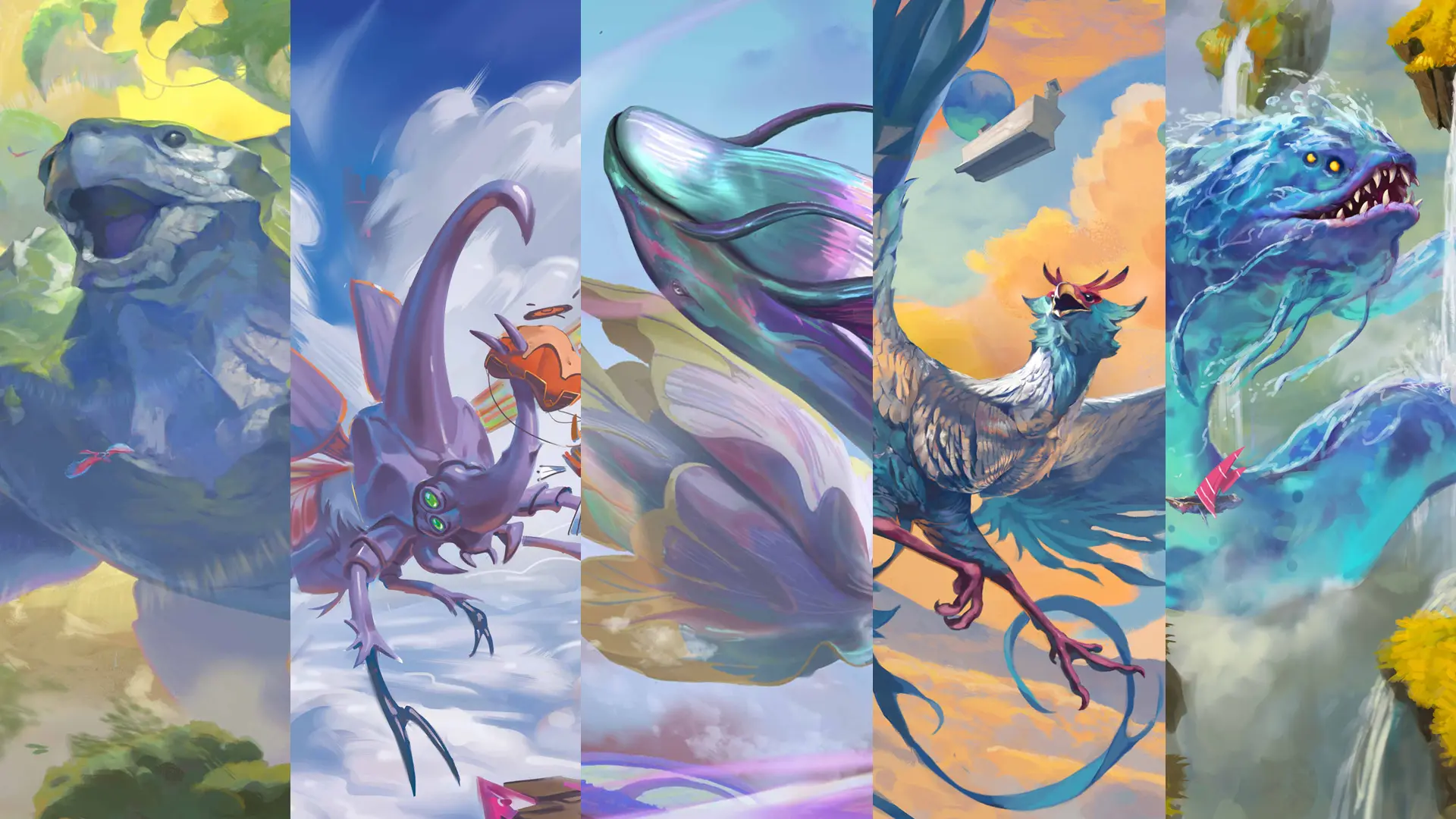
Goliaths

Lore
November 26th, 2025
Reading time
393 AC
MEMO: Leviathans
Aside from Halua, the armada has encountered other Leviathans within the Sea of Clouds. While most do not appear to display aggression toward our squadrons, others can prove more problematic if safety protocols are not followed to the letter.
![]()
Lucan
Type: Insectoid
Risk: High
Morpho-physiological study
Displaying similarities with the Lucanidae family, this Leviathan possesses three pairs of legs ending in enormous black claws, two pairs of membranous wings, a double frontal horn, mandibles, and two pairs of compound eyes. It is capable of flying at speeds exceeding 80 km/h, with remarkable precision of movement. Its thick chitinous carapace makes it a formidable adversary. It measures nearly 800 meters in length and 500 meters in width.
Behavioral study
Found within the Pelagonian Quadrant, Lucan is a rather discreet Leviathan. It lives in seclusion on some of the highest floating islands, far above the clouds. Most of the time, it remains motionless and concealed as long as it is not disturbed. However, it appears to be drawn to Aerolith, and may attack convoys transporting the precious ore.
![]()
Koi
Type: Pisciform
Risk: Moderate
Morpho-physiological study
Resembling the koi carp, this Leviathan has two pairs of long, slender fins resembling sails. Its mouth is adorned with two long appendages that drift like a catfish’s whiskers. Its caudal fin is composed of four very fine, petal-shaped lobes. From head to tail, its length approaches 1,400 meters. Ranging in hue from white to milky pink, Koi is a massive Leviathan with scaly skin. The iridescent texture of its body reflects clouds and liquid surfaces, like the expanses of water it frequents, granting it natural camouflage.
Behavioral study
Primarily found in the Thessalian Quadrant, this Leviathan is gentle and peaceful by nature. Most of the time, it pays little heed to human activity. At worst, it may show clumsiness, but never malice. Its playful tendencies, however, can endanger fleet vessels, as it will not hesitate to follow our ships and inadvertently jostle them with its often abrupt movements.
![]()
Zaratan
Type: Reptilian
Risk: Low
Morpho-physiological study
This Leviathan calls to mind Kacchena, which roams the Cierna. Like its maritime counterpart, Zaratan resembles an island — except this one is suspended in the sky. Its surface is covered in lush vegetation that serves as a nesting ground for a multitude of birds. While its appearance is undeniably that of a sea turtle, its skin is stone-like, bearing the same chalky hue. Massive and imposing, nearing 1,500 meters in diameter, it is an ecosystem unto itself, entirely preserved, and can easily go unnoticed in the heavily vegetated environment of the Rhodopean Quadrant.
Behavioral study
Despite its similar appearance, Zaratan’s behavior stands in stark contrast to that of its Asgarthan counterpart. Docile and curious, it is extremely sociable and gentle. Showing little mistrust, it even seems to have encouraged our explorers to land upon its shell, positioning itself so that our ships could easily cast off their moorings. We observed that some of its scales bore deep gashes, evidence that other Leviathans have targeted it in the past.
![]()
Sagitta
Type: Avian
Risk: High
Morpho-physiological study
Undoubtedly among the most impressive of the Leviathans, Sagitta (named in reference to Sagittarius serpentarius, the bird it most resembles) is a titanic bird with silvery plumage. The feathers that form the extremities of its legs and wings — as well as its head — are a deep blue. Its flight and tail feathers appear as interminable ribbons. Its total wingspan, according to our calculations, is close to two kilometers. Its head, adorned with small purple feathers, forms a sort of crown. Though its beak is small in proportion to its size, it is sharp and extremely keen. Its long legs end in small talons as sharp as razors.
Behavioral study
Sagitta prowls the Thermaic Quadrant for the most part, though we suspect its nest lies in an adjacent region. It plays with water bubbles, whose silvery-blue reflections recall its own plumage, gliding effortlessly between these spherical masses. Extremely territorial, it has attacked our convoys on numerous occasions, complicating water recovery operations. Even so, it merely seeks to drive us from its territory, ceasing its assaults as soon as we leave.
![]()
Alelo
Type: Pisciform
Risk: High
Morpho-physiological study
Similar in appearance to a moray eel or an eel, Alelo — “demon” in Samoan, named in reference to a Polynesian legend — remains the least observed Leviathan by the Expeditionary Corps, due both to its discretion and to the Yzmir Faction restricting any further observation attempts. Like the Mana Moth, Alelo is said to be a hybrid being, straddling the boundary between Aether and reality. This nature makes it elusive, and potentially far more dangerous than any other Leviathan endemic to this region.
Behavioral study
Rarely leaving the Macedonian Quadrant, Alelo dwells in what the Yzmir describe as an open-air cemetery. It has made its home among the bones of deceased Leviathans. One of our sources claims that the creature reacts to any alteration of reality, no matter how slight, and that the Yzmir forbid all use of Alteration within the region.